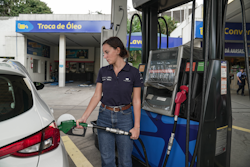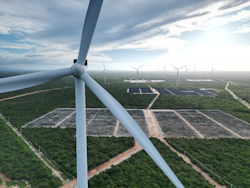Brazil, at the forefront of the global energy landscape
Fortaleza, 83rd stopover for our laboratory vessel, is an opportunity to take stock of Brazil's energy system and understand the potential and opportunities it presents. Our energy expert Beatrice Cordiano plunges us into the energy context of this emerging - but in many respects already extremely advanced - country.
Despite the thousands of nautical miles covered, every arrival is a new beginning, a new experience for Energy Observer. After an Atlantic crossing of about a month, dictated by optimal weather conditions, our laboratory vessel makes a stop in Brazil, which we look at with extreme curiosity for the cleanliness of its energy mix.
Accounting for 3% of the global population and 2% of the world GDP, Brazil is the largest economy in Latin America and the Caribbean and a country which is developing at all levels. Its primary energy needs have doubled since 1990 and are set to further increase in the coming years, marking the time for an energy transition.
The Brazilian miracle(s)
Brazil’s energy matrix is widely regarded as one of the most promising and diversified in the world. With about half of its energy and more than 80% of its electricity needs met by renewable sources, this country surpasses the world average of 15% and 29%, positioning itself as a renewable leader in the global energy landscape.
Despite such a clean energy sector, Brazil has a long - even though not always glittering - record with oil. Marked by challenging oil explorations yielding less-than-promising outcomes in its early stages, the country relied on imports for several decades and until 2007, when major offshore discoveries took place: a turning point for the country which gained its own oil independence.
Today, oil provides together with gas and coal about half of the country’s energy supply. With more than 90% of its oil and gas reserves located offshore the state of São Paulo and Rio de Janeiro, the country is today the leading oil producer of Latin America and holds the 8th position worldwide, boasting 15 billion barrels of proven oil reserves and a daily production of about 3 million barrels, enough to meet France’s oil needs twice.

Energy Observer in Brazil
Oil is still a necessary evil but contrary to common perception, it is not a shock of supply but rather a shift in the demand that will make us succeed in phasing it out. In fact, when countries set deadlines to abandon gasoline or diesel-powered vehicles, then oil becomes a little less interesting and Brazil is the perfect example for this.
Everything started in the 1970s, when the oil crisis hit the country and fuel prices skyrocketed due to the energy shortage. It was then that the government decided to bet on his five-century old sugarcane industry and transform it to make ethanol out of it, and not just sugar.

Energy Observer Production team in Sao Manuel
In 1975, Brazil launched a groundbreaking program to promote the production and use of ethanol as an alternative fuel, the Proalcool, and in 1979 the Fiat 147 - the very first car running only on hydrous ethanol - was already on the market. This set the beginning of a new era and since then, the number of flex-fuel vehicles on the roads, namely vehicles that could work with any blend of ethanol and gasoline, exploded creating a growing demand for this new fuel, way cheaper and more sustainable throughout the whole value chain than oil.
Today, Brazil is the second major producer of ethanol, a biofuel which covers about 50% of the road transport energy needs and that allowed to save more than 630 million tons of CO2eq since 2003.

Beatrice Cordiano at a gas station in Brazil
From renewable to renewable
Brazil is blessed with exceptional natural sources other than biomass, and renewable energy is nothing new here. Hydroelectricity has been the backbone of the energy system for a long time and historically, the country channelled its investments into establishing an extensive, reliable, and robust infrastructure system to harness its abundant water resources that crisscross the territory.
This source has been for decades the most competitive renewable energy - in Brazil and worldwide - not only from an economic point of view but also because hydropower plants can adapt their electricity generation much faster than nuclear, coal or natural gas plants and their output fluctuates way less than solar and wind. Today, hydropower supplies almost two thirds of the national electricity demand but there’s a hitch. This energy relies on rainfall patterns and the latest extended periods of droughts have pushed the government to invest in other renewables to diversify its mix, betting on wind and solar.

Wind farm in Brazil
While solar irradiation is abundant everywhere throughout the territory, wind resources are mainly concentrated in the Northeast, a region with constant winds, stable speeds and directions and capacity factors ranging from an average of 40% to optimal values of 60%, way more than the global average of 34%. No wonder why 80% of Brazilian wind farms are located there.
Solar and wind are definitely not a new trend, it is something happening all over the world since many years and here too, while just about a decade ago these energy sources had little to no significance for the country, they are now breaking records. And surprisingly Brazil, despite being a latecomer to these resources, is already raising the stakes, seeking to develop a large-scale competitive production of low carbon hydrogen.

Wind power capacity installed in Brazil
Brazil’s journey towards a clean energy sector has been nothing short of remarkable and the country will need to keep on anticipating what is happening in the rest of the world, to innovate continuously and consolidate its low-carbon matrix. Because decarbonisation is not an option, but an imperative for the 21st century.


